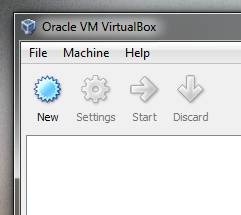

- APPLE SNOW LEOPARD REQUIREMENTS MAC OS X
- APPLE SNOW LEOPARD REQUIREMENTS UPDATE
- APPLE SNOW LEOPARD REQUIREMENTS UPGRADE
- APPLE SNOW LEOPARD REQUIREMENTS FULL
- APPLE SNOW LEOPARD REQUIREMENTS SOFTWARE
APPLE SNOW LEOPARD REQUIREMENTS UPGRADE
It’s worth considering, though, that with its £25 upgrade price, it’s unlikely that many Leopard users are going to be in much debate as to whether to go for this new, fluffier version. Misleading because while a living, breathing snow leopard is superficially distinct, but fundamentally little different to a leopard, OS X 10.6 is pretty much the exact opposite little has changed on the surface, but underneath we’re dealing with an entirely new creature. Appropriately, because it is, as the moniker betrays, more an upgrade to the previous incarnation of OS X than a radical overhaul. Mac computer with an Intel processor (IA-32) 1 GB of RAM 5 GB hard disk space DVD drive or external USB or FireWire DVD drive.Snow Leopard is at the same time quite appropriately, and entirely misleadingly named. It offers additional features and improved performance.Ĭlosed source (with open source components)Īny Intel processor, or PowerPC G5 or G4 (867 MHz and faster) processor optical drive: internal or external DVD drive minimum 512 MB of RAM and minimum 9 GB of disk space available.
APPLE SNOW LEOPARD REQUIREMENTS UPDATE
Snow Leopard is an update to the company’s Leopard OS. Leopard is an OS that was launched by Apple for its Macintosh computers and laps. However, it is still available online in order for users to be able to upgrade to Lion.
APPLE SNOW LEOPARD REQUIREMENTS MAC OS X
It was succeeded by Mac OS X Lion (version 10.7) which was released in July 2011. It is also the last release to support the 32-bit Intel Core Solo and Intel Core Duo CPUs. This is also the first system that does not support PowerPC architecture.
APPLE SNOW LEOPARD REQUIREMENTS SOFTWARE
It also offered new programming frameworks such as OpenCL, which allowed software developers to use graphic card in their applications.
APPLE SNOW LEOPARD REQUIREMENTS FULL
Much of the software was rewritten in order to for the OS to take full advantage of a modern Mac computer. The main objective of Snow Leopard upgrade was improved performance, greater efficiency and the reduction of its overall memory footprint.

It was launched in August 2009 and was sold as an upgrade for an additional price of $30 for a single user license. It is an upgrade to the original Leopard version 10.5. Mac OS X Snow Leopard (version 10.6) is the seventh major OS released by Apple. It also offered developer technologies and security enhancements. Wikipedia states that the Leopard, when launched, boasted new features such as: new and improved Automator, Back to My Mac, Boot Camp, Dashboard enhancements, new Desktop in look and design, updated Dictionary, Finder, Front Row, iCal calendar sharing and group scheduling as well as syncing event invitations from Mail, iChat enhancements, Mail enhancements, improvements in Network file sharing, updated Parental controls, Photo Booth enhancements, Podcast Capture, Preview, Quick Look, Safari 3, Spaces, Spotlight with additional search capabilities, Time Machine (automatic backup utility), etc. Leopard was the final version that would support the PowerPC architecture, with the latest ones running solely on Intel based Macs. Mac OS X Leopard (version 10.5) was the sixth major OS that was released by the company in October 2007 and served as Apple’s desktop and server operating system for Macintosh computers. Hence, Snow Leopard is just an upgrade of their already available Leopard OS. Mac OS X Leopard (version 10.5) is the sixth major OS released by Apple, which was then followed by Mac OS X Snow Leopard (version 10.6). However, in addition to them being beautiful creatures, these are also the names of OS (operating systems) that are launched by Apple. If you have ever worked with Apple computers and laptops, you probably know what Leopard and Snow Leopard are. Key Difference: Mac OS X Leopard (version 10.5) was the sixth major OS that was released by the company in October 2007 and served as Apple’s desktop and server operating system for Macintosh computers.


 0 kommentar(er)
0 kommentar(er)
